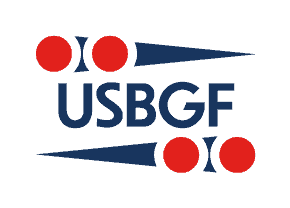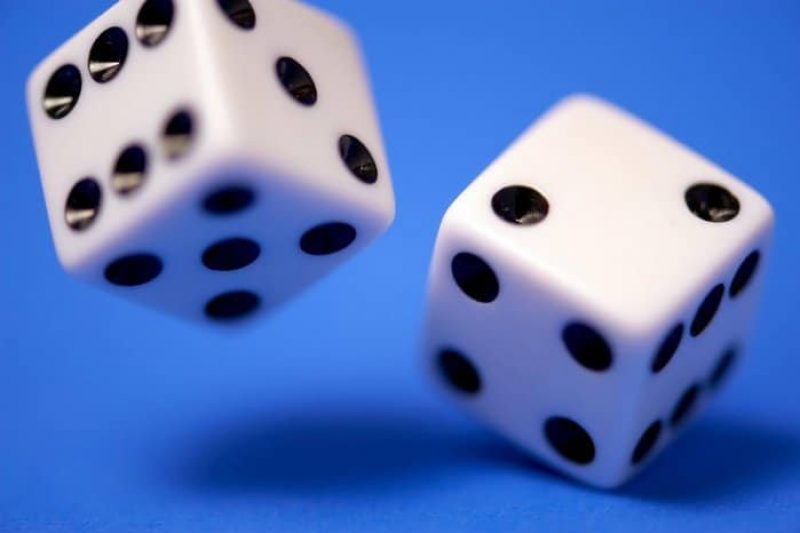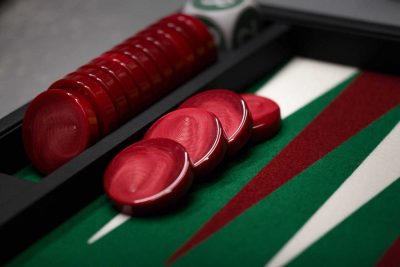By Marty Storer
This is the first article in the Opening Rolls series. An opening roll is the very first roll of any game. This article covers the best opening rolls: 31, 42, 61, 53, and 65. I call those rolls The Easy Ones because they are easy compared to other openers: You can do something really good, so you do it. With 31, 42, 61, or 53 you make a new, useful point; with 65 you escape a back checker safely.
But even easy choices can be hard. What does that mean? You may think a move is obvious, but if you look a little deeper, you’ll see that what seems easy may actually be difficult. An example is the opening roll of 53, which was heatedly argued over in the 1970s and ‘80s. Backgammon computer programs (bots) hit the scene in the 1990s, and have always agreed that it’s correct to make the 3 point with 53. Bots are so good that everyone now thinks the 53 argument is settled.
In this series, I want to analyze the opening rolls — not as deeply as I could, but deep enough to give you a glimpse into how much fun and profit you can get from breaking the surface of this wonderful game. There’s a lot to see beneath the simple exterior! Remember, every game has an opening, and if you understand opening rolls, you’re already delving into strategy (game plan) and tactics (techniques to help achieve your game plan). The sky’s the limit.
A final note before we really get started. In all diagrams, you’re looking at the board from Black’s point of view. Black is the player with the black checkers. When I say “you,” I mean Black. I want to speak to your perspective.
Now here we go.
31 Opening Roll


The best opening roll is 31, making the most valuable point available. The 6 point is better, but you already own it.
Why is the 5 point so valuable? Two reasons: It’s good for blocking; now White can’t play 4s from your 1 point (White’s 24 point). You want to block high numbers like 4s because higher numbers move your opponent farther along in the race. So the 5 point helps you block your opponent, and blocking is the most important opening objective. New points on your side of the board also help you race, later, by providing safe landing spots for your homecoming checkers.
The second reason to make the 5 point is that it’s an inner-board point. In the early part of the game, which we call the opening, there will generally be a lot of hitting. In fact, hitting possibilities are very important throughout the game. If you hit a checker, it goes to the bar, and your extra inner-board points help keep it there, where it does not want to be. Those extra points also restrict White’s choices with numbers that allow her come back in from the bar.
42 Opening Roll


Second-best of the easy openers. The 4 point is a good inner-board point, but it’s not as good as the 5 point because it blocks 3s and not 4s (again, it’s usually better to block larger numbers). Also, you prefer to have consecutive points when possible—like the 5 and 6—because consecutive points are more easily extended to form a prime. Four points in a row, a four-point prime or four-prime, is a nice structure. It’s harder to escape checkers from behind consecutive points than from the same number of points that are not consecutive. (We call non-consecutive points broken primes or structures with gaps.) If you roll double 1 next, you play 8/7(2) 6/5(2), making your bar and 5 points to transform your broken three-prime into a solid four-prime.
61 Opening Roll


Third-best of the easy openers. The bar point (another name for the 7 point) forms an instant three-point prime. That prime is quite helpful for blocking; now White can’t play a 6 from your 1 point to your bar. So the three-prime turns her 65 and 66 into very poor replies. In spite of that, the bar point is not quite as valuable as the 4 point, mostly because the 4 point is an inside point with pretty good blocking value.
It seems like a good time to mention another reason why you’d rather have an opening 31 or 42 than a 61. Notice that if you make your 5 or 4 point, you use a checker from your 6. The 6 point only needs two checkers to perform blocking duty; the other three, the spare checkers or just spares, would be happy to be of use in making some other point. They have few places to go, and are bunched up inefficiently. So it’s good to unstack the 6 point early, though you do have to be careful about being hit. We’ll see some interesting examples later.
Here’s a brief story. Very long ago, I had an online discussion with a fellow who could only be called a bar-point fancier. He really liked primes, and the bar point gave him a three-point prime that could be extended. What could be better than that? When I told him why I preferred the 4 point on the opening roll, he said it was much better to bring two blots into the outer board, 13/9 13/11, hoping to use those blots to build the bar point next turn! I said that a 4 in the hand is much better than a bar in the bush, and besides, those blots might be hit. He replied, honestly but stiffly, “Your suggestion is one I certainly will not adopt.”

There’s no reason to spend much time on a play like this. Please make your 4 point with opening 42! Remember that in backgammon, assets are everything! A useful point is useful for the whole game, or at least until you break it. So it’s best by far to make the 4 point with 42, as the whole world knows by now. And since the 4 point is generally superior to the bar early on, making the 4 on the first roll is better than passing up that point in order to try for the bar. Corollary: On your second turn of the game, given the choice, you should most often make your 4 point instead of your bar.
53 Opening Roll


Everybody makes the 3 point these days. But that hasn’t always been true. When I first started playing (far too many years ago), the move 13/8 13/10 (shown below, 4B) was widely considered best. The 3 point, most players believed, was “too deep” to block very well, so they thought it was worth some risk to forget about the 3 point and instead put a blot on the 10 point, for a builder—a checker that can be used to make a new point.

Yes, White may hit the builder-blot with 63 or 54 (she has better options with 33), but that’s unlikely. So why settle for a deep point when you might get a better one? Look at the possible gain: the 10-point builder adds more than a few numbers to make the bar, 5, or 4 point. Now 63 makes the bar; 62 and 64 make the 4; and 51 and 53 make the 5. Of course, those numbers help you only if White does not upset your building plans by hitting, turning your builder into a dancer on the bar. (As you see, backgammon has its own colorful language.)
Note, too, that a fourth checker on the 8 pressures the checkers in your inner board. That spare checker adds no new blocking numbers, but it enhances what you already have. For example, double 1 makes your bar and 5 points, and also keeps the 8 point because of the extra spare. If you had only three checkers on the 8 point, you’d still make your bar and 5 points, but you’d have a blot on the 8 instead of a point.
Those arguments seem persuasive. However, the building play has serious drawbacks. The biggest is that it does not make a new inner-board point. Second-biggest is that White can hit with 63 or 54, which would otherwise be bad numbers. Finally, though the building move reinforces the 8 point, it also depletes the midpoint (13 point). In the early game you have to be cautious about coming down to fewer than two spares on the midpoint. Midpoint spares are quite useful for hitting in your own outer board (your outfield), and for making outfield points.
The building play with 53 is not nearly as bad as the bar-point fancier’s building 42, but it’s still pretty bad. In this case, a 3 point in the hand beats a bar, 4, or 5 point in the bush. Assets, assets, assets—get them while you can.

The second-best play with opening 53 is 13/8 24/21 (down and split). Though this move reinforces the 8 point, keeps two spares on the midpoint, and gets the back checkers moving, it is clearly inferior to the simple, strong play of making the 3 point. We’ll cover splitting plays in another article of this series.
65 Opening Roll


This roll is actually a bit better than 53. You escape one checker, gain 11 pips, and start to think seriously about racing. “When ahead in the race, race,” says Kit Woolsey, and this opening roll has already done much to condition your strategy. Alternatives are weaker.

Second-best is to split the back checkers with the 6 and reinforce the 8 point with the 5. You might make an advanced anchor on White’s bar, or you might hit her back if she hits you without covering (or hits loose); but it’s better to get that checker away. If you can’t complete its escape with the other number—if you roll 64, 63, or 62 instead of 65—then it’s good to come out to your opponent’s bar point. We’ll explore those other rolls in our next article.

The aggressive building play, 13/7 13/8, is much weaker than the racing move, for two reasons:
(1) 24/13 moves many pips, almost three more than average, so it’s natural to complete the escape of one back checker; (1) 13/7 13/8 tries to block but gives White 17 ways to hit the slotted checker.
Slotting means putting a checker on a point where your opponent can hit it with a single number on the dice, or a direct shot. You take that risk—a big one because direct shots are much more likely to be hit than indirect shots—in hopes of covering the blot next time. (Risk versus gain— that’s backgammon in a nutshell.) If White misses the direct shot, you can easily make your bar point, or perhaps your 5 or 4. Slotting is not always bad—we’ll see examples later—but here the blocking plan is not advisable. It’s risky, and the running play is simple and strong. Not for nothing did the ancients call it Lover’s Leap.
One 1970s author disdained Lover’s Leap as a “death jump.” He didn’t like running; his plan was to slot points and win by priming when his opponent missed, and win with a backgame (a type of ambush strategy) if hit. He was wrong, but his approach leads to exciting games.
That concludes the first article of the Opening Rolls series. I hope you enjoyed it!
The next article will cover 64, 63, and 62. Should you split, slot, or run? Should you make your deep 2 point with 64? Stay tuned.




